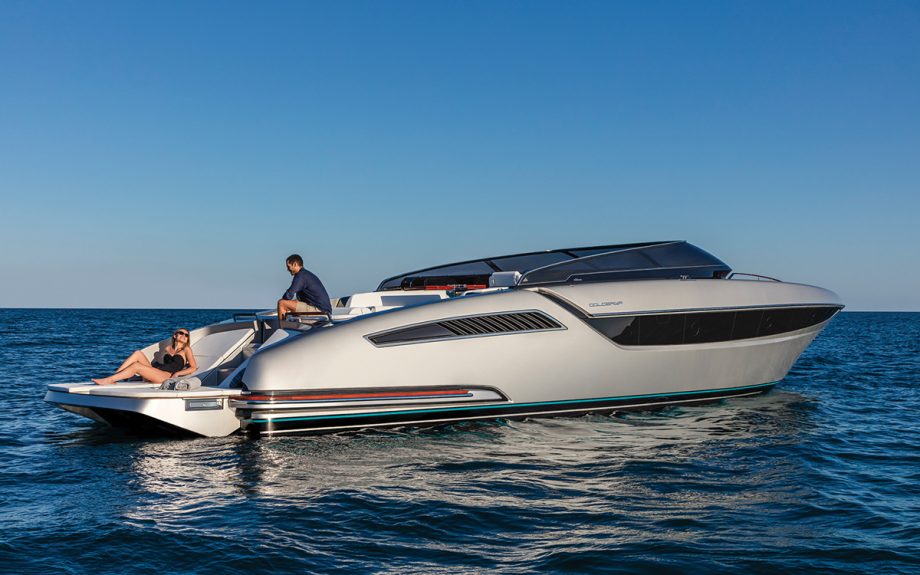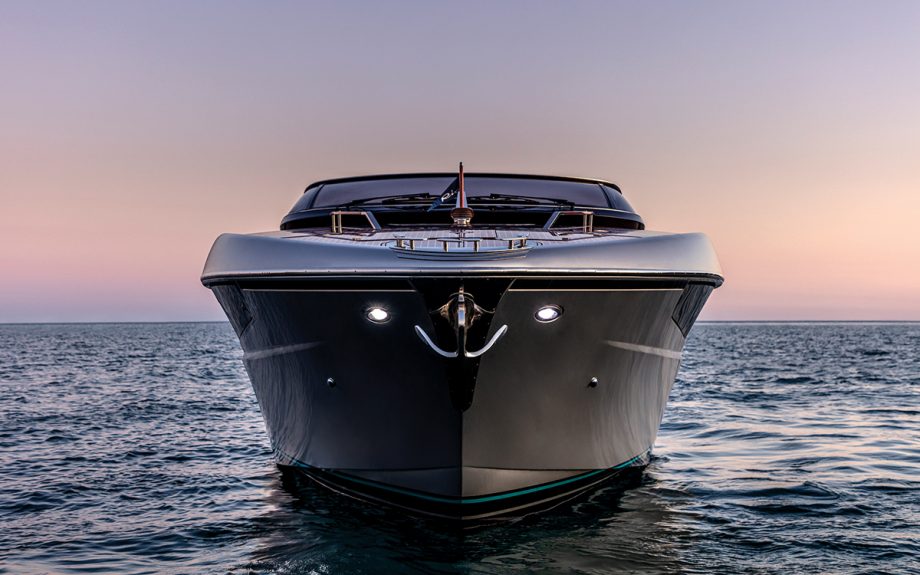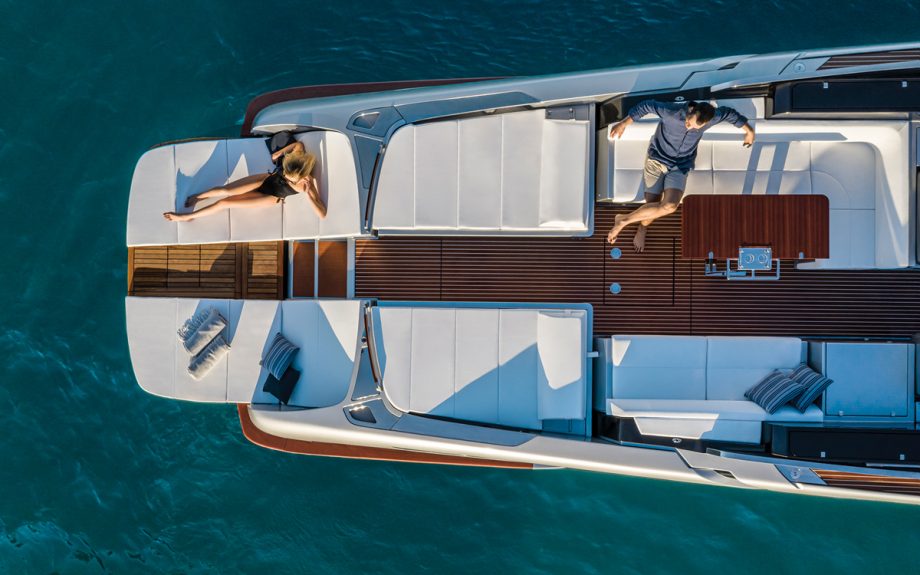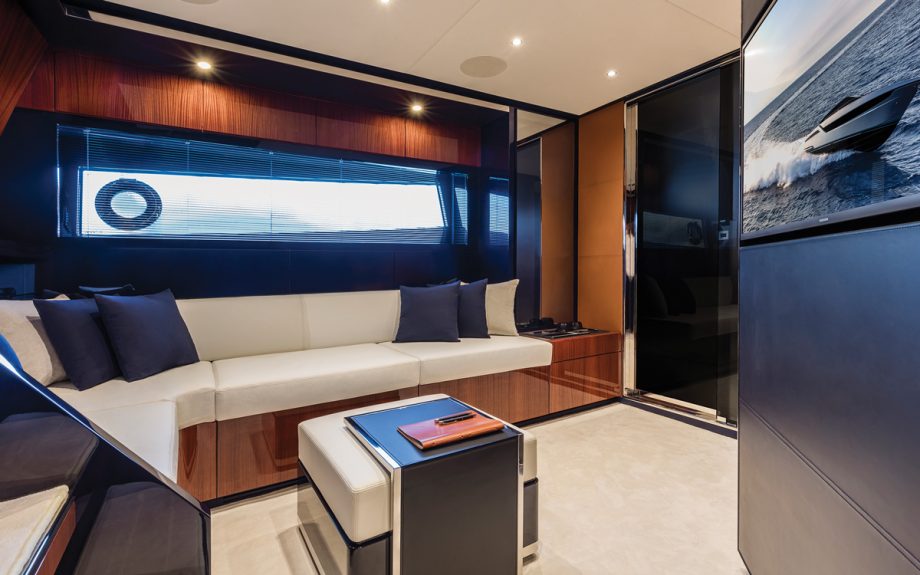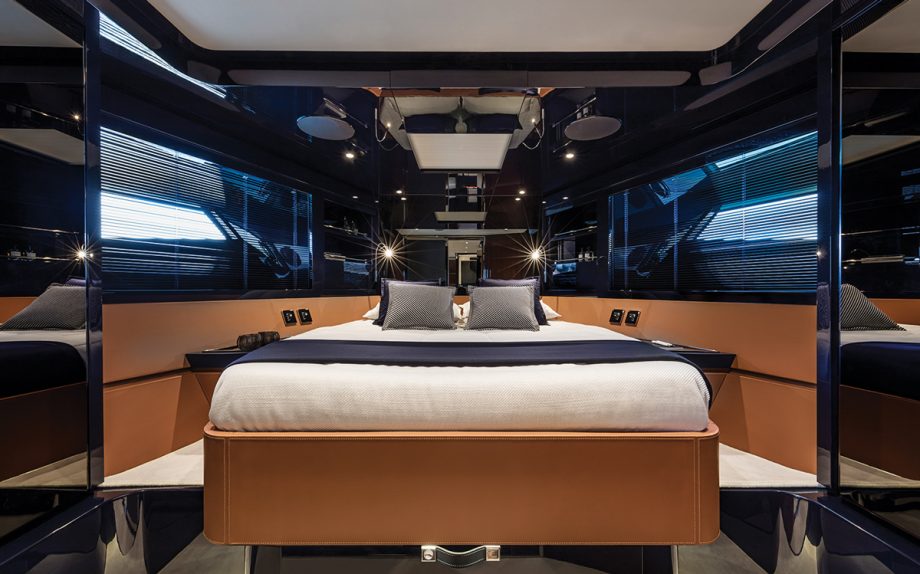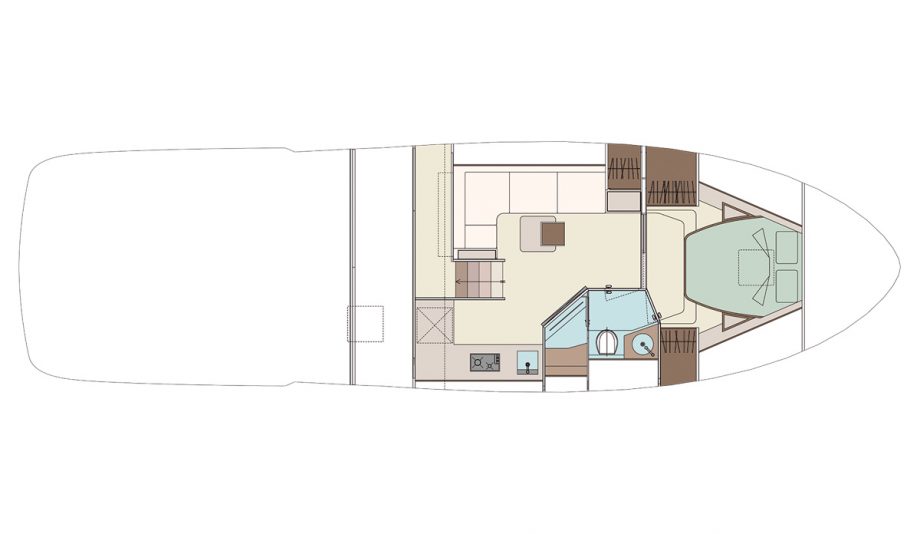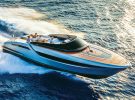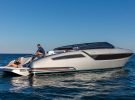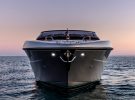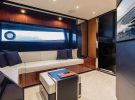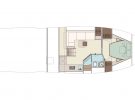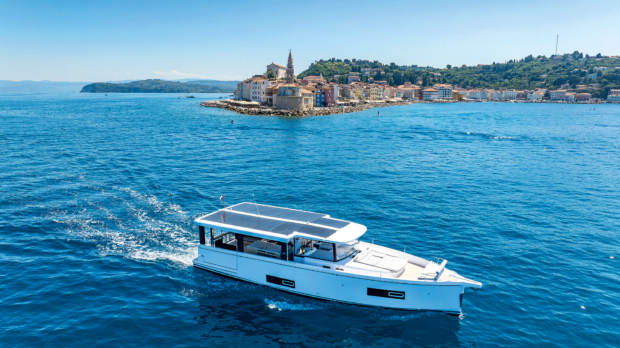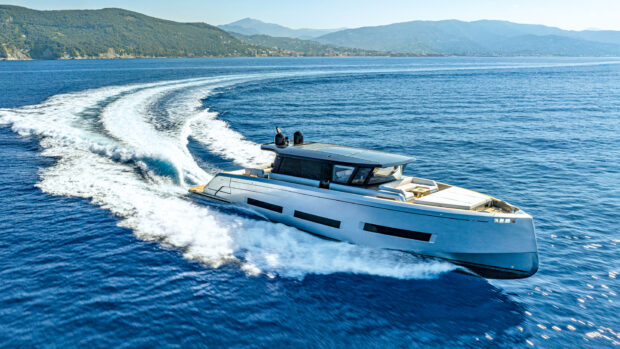Riva’s achingly glamorous new sportscruiser was unveiled at Cannes and editor Hugo was one of the first to take it for a spin...
The launch of a new Riva is always a big event, especially when it’s a fast, open model that straddles the gap between the yard’s smaller, sexier retro-inspired sportsboats and its larger, more luxurious sportscruisers.
In fact, right up until the opening day of the Cannes boat show its looks, its size and even its name were a closely guarded secret; all we were told was that it was less than 70ft and would we like to sea trial it? Let me see now – of course we damned-well would!
Nor did it get any less enticing when the wraps came off the Dolceriva to reveal a curvaceous 49-footer with Riva’s iconic lacquered mahogany foredeck and no less than 2,000hp nestled snugly into the engine bay.

The transom cover rotates to become a bathing platform
None of your fancy swivelling IPS pod drives on this beast, just 10.8-litres of raw turbodiesel power linked to vee-drive shafts and rudders for the full-fat Riva experience. The only nod to user-friendliness is the addition of a joystick to help juggle the engines and bow thruster when berthing, and the option of a Seakeeper NG6 gyro stabiliser.
Class act
The joystick may make things easier for the skipper but it doesn’t hide the fact that there’s a lot of grunt at play down there. Every nudge and twist results in a deep-chested rumble from the exhausts and swirl of turbulent water under the stern as those big props bite.
To help put that in perspective it’s worth noting that although the Dolceriva is roughly the same length and beam as the Wallytender 48, it weighs almost twice as much and packs more than double the power.
Sat at the helm, the view is every bit as imposing as you’d expect. The fancy new smoked glass screen with its double curvature surface and cutaway base seems to float a few inches above the foredeck.
It’s a pity that the mahogany deck itself, with its white maple seams and 20 coats of varnish, is set too high for the helmsman to admire it under way, and that the stainless steel windscreen frame tends to sit in the middle of your eyeline but owning something as beautiful as this rarely comes without the occasional compromise.
Besides, any such thoughts are soon swept away with a surge of acceleration as I push the throttles home and the bow lifts in response. Once over the hump it settles back down to a more stately trim but carries on thundering towards the horizon at an ever-increasing pace until the speed over ground is hovering at a steady 39 knots.

The new Dolceriva looks suitably elegant from every angle
At this size and weight, the Dolceriva’s performance is more Rolls-Royce than Ferrari, a comparison that the hull seems to echo. It rides the rolling swell off Cannes with supreme confidence, rising and falling with a relaxed, languid gait that seems to flatten the sea rather than succumbing to anything as undignified as a slam or shudder.
The steering is surprisingly light and with a mere 2.5 turns lock to lock there is no need for any arm twirling but shafts and rudders rarely make for agile handling and the Dolceriva’s turning circle is no better than average for a craft of its size.
Then again driving a Riva has never been about its raw pace or razor-edged responses, the pleasure comes from revelling in its style and character, drinking in the details and appreciating the effortless manner in which it hoovers up the miles. Measured by these yardsticks the Dolceriva delivers in spades.

Plenty of sunloungers but the main cockpit seats lack support
Swapping the helm in favour of the bench seats running down each side of the cockpit seems like a poor trade. They work well at rest when you can unfold the beautifully crafted table and dine in style but at speed the backrests feel oddly low, and sitting side-on to the action with a slight slope towards the stern and no sculpted seat bases or handholds to stop you sliding aft is not the most comfortable way to travel.
Down below the opulence is off the scale with entire bulkheads swathed in hand-stitched saddle leather, soft white carpets that envelop your toes and so many shiny surfaces you daren’t touch anything for fear of leaving a fingerprint. Practical it’s not but impressive it most definitely is.
The standard layout has a lavish master cabin forward with a sliding door for privacy, a generous lower saloon, a good-sized heads compartment and a compact but reasonably well-equipped galley. There is an option for a twin guest cabin leading off a smaller saloon or a single crew cabin with access from the cockpit.
Price as reviewed:
£1,220,000.00 ex. VAT
Verdict
Riva has become rather coy about pricing on the basis that if you need to ask you probably can’t afford one, but if you are in that league we understand that prices start at around €1.43 million ex VAT. Frankly, at that price it would be a crime to let anyone else near the helm so forget the crew cabin and keep the pleasure of driving it all to yourself. I know I would.
Details
LOA: 48ft 11in (14.92m)
Beam: 14ft 0 in (4.26m)
Draft: 4ft 10in (1.48m)
Engines: Twin Volvo Penta D13 1,000hp
Top speed on test: 39 knots
Cruising speed: 31 knots
Range at 31 knots: 164nm
Displacement: 21.4 tonnes (47l,179 lbs)
Fuel capacity: 1,800 litres (396 gal)
Water capacity: 310 litres (68 gal)
Design: Officina Italiana
RCD Category: B



